Artist’s Statement
In creating “Animal Kingdom,” our vision was to craft an ecosystem that mirrors the complexities and nuances of political dynamics in a modern society. The game is not just a board game; it’s a microcosm of political maneuvering, social stratification, and the perpetual struggle for influence and power. By integrating elements like policy cards, global events, and diverse districts of varying socioeconomic levels, “Animal Kingdom” offers players a real-world representation of the socio-political landscape and system.
Our intention is for players to gain insights into the intricacies of political strategies and the impact of socio-economic factors on governance. The game encourages players to think critically about the consequences of political decisions, the unpredictability of global events, the vulnerability and agency of different socio-economic classes, and the importance of balancing power with responsibility. Through the metaphor of an animal kingdom, the game simplifies these complex concepts, making them accessible and engaging.
We aim for “Animal Kingdom” to be both educational and entertaining. By immersing players in a competitive environment, the game fosters a deeper understanding of political empathy and strategic thinking. It also illustrated the vulnerability of different social classes to unpredictable global events or partisan political decisions. It highlights how political parties can use these vulnerabilities for political gain in an opportunistic manner. However, it also demonstrates how political decisions like investing in education or in immigrant rights can uplift segments of society while benefiting the political party itself. The diverse range of policy cards and global events ensures that no two games are the same, prompting players to continuously adapt their strategies.
Ultimately, “Animal Kingdom” is designed to be a reflection of our world – a world where decisions have consequences, strategies evolve, certain events are unpredictable, and the quest for influence is omnipresent. It’s a game that not only entertains but also enlightens, encouraging players to ponder the delicate balance of power in our society.
Versions of the Game
The game, initially conceptualized with a political theme and elements like policy and global event cards, underwent significant evolution. Early versions featured fewer policy cards and basic political terms, but feedback from playtests led to several improvements. The number of policy cards was increased for better strategic depth, and global event cards were added for unpredictability. Terminology was refined for sensitivity and clarity, with terms like ‘Upper Class’ changed to ‘High Income’. The game’s political dynamics evolved, replacing ‘socialist’ with ‘nationalist’ to fit the theme. Gameplay was streamlined by removing complex rules and rebalancing cards. New actions were introduced, adding depth. Continuous feedback from playtests, involving diverse participants, guided these changes. Suggestions on card clarity, victory conditions, and emotional dynamics were incorporated, leading to a balanced, strategic, and inclusive game that mirrors real-world political dynamics and has educational value.
Iterative Changes and Rationale
- Increase in Policy Cards: Initially, players started with fewer policy cards. To balance gameplay, the number was increased to 48, ensuring adequate resources for a four-player game.
- Finalizing Global Event Cards: These cards were developed to add unpredictability and strategic depth.
- Terminology Adjustments: Terms like ‘Upper Class’ were changed to ‘High Income’, and ‘Low Income’ to ‘Working Class’, for sensitivity and clarity.
- Game Element Consistency: Standardized terms like ‘influence cube’ and ‘district’ were adopted for clarity.
- Political Party Dynamics: Changed ‘socialist’ to ‘nationalist’ to fit the game theme, and allowed parties to choose political orientations.
- Rule Modifications: Removed certain clauses and components (e.g., large cubes) to streamline gameplay.
- Card Rebalancing: Adjusted the impact of various cards to maintain game balance.
- New Actions and Definitions: Introduced new actions like boosting influence and declaring political strategy, adding depth to the gameplay.
Improvement Evidence
- The game evolved to be more strategic and inclusive, with clearer rules and terminologies.
- Adjustments made the game more sensitive to real-world analogies, enhancing its educational value.
- The balance between different game elements was refined, leading to more engaging and competitive gameplay.
Loops and Arcs
The key goal of the game was to make people ponder the balance of power in our, the real world. While it’s animal themed to be more accessible, of course, deep down, it is a reflection of real world politics. As such, we have tried to subtly try to teach players something about real world politics, broken into loops and arcs.
Loops (Woven Into Gameplay)
The loops woven into gameplay and surfacing again every round (as part of the policy cards and the structure of the game) include different populations having different needs and therefore responding differently to policies.
For example: What a wealthy, urban neighborhood decries as populist works in a different district with a different reality for a reason?
Or one player acts aggressive to win voters in a stronghold of yours, and you need to act – yet you have already committed to a certain policy that is now no longer ideal (mechanic of putting down the card you intend to play at the beginning of the round). And so forth…
Arcs (Delivered as Event Cards)
Title: Grassroots Uprising Event Card
- Real World Scenario Described in Arc: The use of social media in empowering grassroots organizations, highlighting the digital era’s impact on political activism, especially in working-class areas.
Title: Refugee Crisis Event Card
- Real World Scenario Described in Arc: The challenges and impacts of a refugee influx from neighboring conflicts, reflecting on immigration crises and their socio-economic effects on various income districts.
Title: Pandemic Outbreak Event Card
- Real World Scenario Described in Arc: The societal and political upheavals caused by a global health crisis, echoing recent pandemic experiences and their influence on public sentiment and leadership preferences.
Title: Davos Summit Event Card
- Real World Scenario Described in Arc: The influence of elite global summits, similar to the Davos World Economic Forum, on public focus and policy in affluent areas.
Title: Strong Economy Event Card
- Real World Scenario Described in Arc: Economic growth leading to unequal wealth distribution, resonating with global trends where prosperity often favors higher-income districts over working-class areas.
Title: Neighbors at War Event Card
- Real World Scenario Described in Arc: The domestic impact of neighboring countries at war, involving peacekeeping efforts and military engagements, reflecting historical and current global conflicts.
Title: Unionization Wave Event Card
- Real World Scenario Described in Arc: The rise of labor movements and unionization, especially in working-class sectors, advocating for fair rights and wages, mirroring ongoing global labor struggles.
Title: New Immigrant Voting Policies Event Card
- Real World Scenario Described in Arc: Progressive changes in immigration policies allowing immigrant voting, akin to real-world reforms granting political rights to immigrants, shaping party support and political landscapes.
Game Testing Feedback and Notes
Playtest 1: In-Class College Students
- Participants: 4 college students from a game design course.
- Feedback:
- Confusion about what info can be conveyed
- Confusion about what condition cards mean in actual execution
- When should card be played? Why does waiting until the end of everyone’s turn to play matter?
- Help players remember what cards had been played
- Tapping twice after players have already strategized together seems redundant – what happens if players disagree? Is it likely that they disagree?
- Liked being able to see your team’s cards but not your own
- No lack of information, game is too easy
- More complex movements would be appreciated
- Fun after players understood what was happening but confusing initially
- Adaptations Made: This initial game concept was scraped for not being “system-like”. The team felt that a different, more complex system would best fit the project requirements.
Playtest 2: In-Class College Students
- Participants: 4 college students from a game design course.
- Feedback:
- Framing of the game is questionable – why are immigrants fighting? Cards are somewhat uncomfortable and low/high skill divide is also uncomfortable
- Map is far too small
- People not encouraged to speak to each other to trade – need to add more explicit negotiation prompts
- There should be a cheat sheet of the rules
- Adaptations Made: The strongest response we got from this playtest was in regards to players feeling uncomfortable at the political messaging behind the game. Based on this, we chose to lean away from assigning players political ideology directly and instead allow player choice in terms of what ideology they wish to follow throughout the game. Additionally, we implemented a friendly looking animal theme to further move players away from thinking of themselves as real world parties which may hold existing prejudice.
Playtest 3: College Students
- Participants: 4 players (2 CS students, 2 LDT students).
- Feedback:
- Enjoyment and willingness to replay.
- Suggestions for clearer symbols on policy cards.
- Strategy cards were highly sought after.
- Recommendations for game mechanics adjustments (e.g., VP tokens, policy cards discard option).
- Suggested improvements for offensive cards and immigrant population policies.
- Identified the need for a scorecard to track progress.
- Adaptations Made: Based on this feedback, game symbols were clarified, and rule adjustments were considered, such as implementing a scorecard.
Playtests 4 and 5: Family Gathering
- Participants: Diverse, including a 13-year-old and two middle-aged men.
- Feedback:
- Positive reception, with comments on the fun aspect even in adverse situations.
- Observations about card balance and victory conditions.
- Suggestions for alternative victory point mechanisms and round-by-round vote counting.
- Noted emotional dynamics and player interactions.
- Adaptations Made: Adjustments were made to card effects, especially for the leading player. The rules were tweaked to incorporate suggestions about victory points and vote tracking.
Playtest 6: In-Class College Students
- Participants: 4 college students from a game design course.
- Feedback:
- District Name Clarity: Students emphasized the need for clear and distinct naming of class districts to facilitate strategic decision-making.
- Balancing Opponent Presence: Suggestions were made to refine how opponent presence is managed on the board, aiming for more strategic depth and clearer rules.
- Reevaluating District Types on Cards: Some students found the inclusion of district types on cards to be potentially redundant or confusing, suggesting their clarification in gameplay.
- Reducing Card Text: The excessive text, especially story elements on the cards, was seen as overwhelming. It was suggested that these be minimized to streamline the focus on game mechanics.
- Simplifying Event Frequency: There were concerns about the number of events per turn, with suggestions to simplify the game’s turn structure for a smoother, more engaging experience.
- Enhancing Political Leaning Impact: The students felt that political leanings should have more influence on the gameplay, perhaps through more integration with event and category cards for added thematic relevance.
Pictures of Game Tests
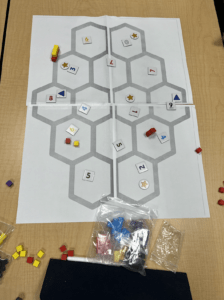
Picture 1: First Game Board, Developed after Playtest 1 & 2.
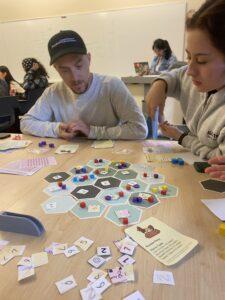
Picture 2: Slightly updated Board in Use During Playtest 3 (on Nov 16, in class)
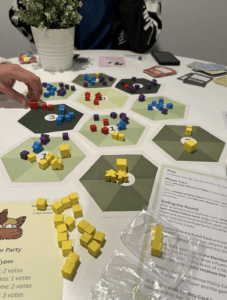
Picture 3: Updated Design Making the Voting Power of Different Districts More Clear with Bigger District Tiles, Distinct Colors and Numbers Printed on Them, during Playtest 4
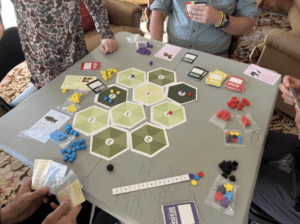
Picture 4: Playtest 5, now includes Cardboard Strip to Count Points
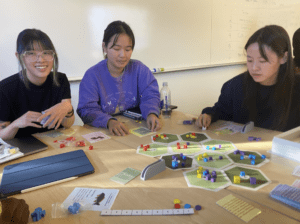
Picture 5: Picture from Final Playtest (Number 6) Showing Players Focused/Strategizing During Initial Learning Period of a Few Minutes
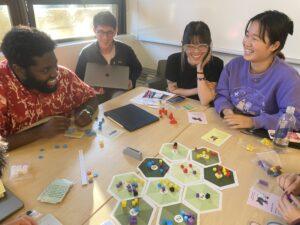
Picture 6: Picture from Final Playtest (Number 6) Showing Participants Enjoying the Game After Attacking Each Other Using Offensive Cards
Printable for Game (+Historical Versions)
V1
V2
- Copy of Rules Sheet Final Printable – 11 x 8.5 in (canva.com)
- Copy of Cards Final Printable – Poster (US) (canva.com)
- P3 Event Cards – For Print (11/28) – Poster (US) (canva.com)
- Policy Cards.pdf
Concept Map
https://miro.com/app/board/uXjVNPJAbOE=/?share_link_id=626828559631
CS377G P3 Game Concept Map – Frame 1.jpg

